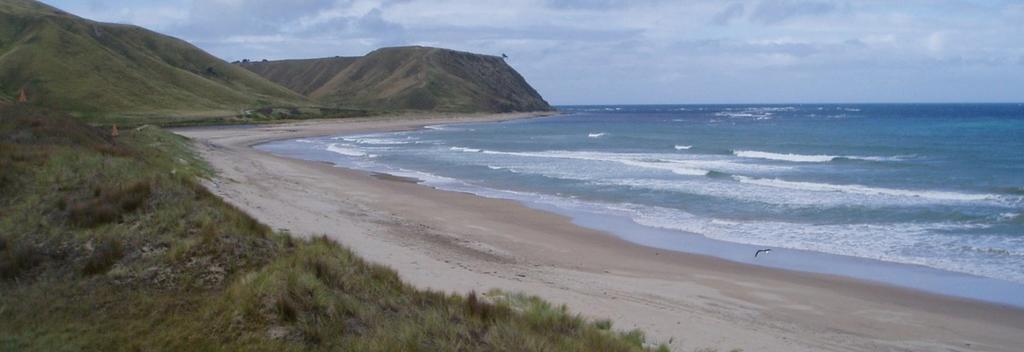

Discover Te Tapuwae o Rongokako marine reserve, a coastal sanctuary for wildlife and nature enthusiasts.
Te Tapuwae o Rongokako Marine Reserve offers a rare opportunity to see Aotearoa New Zealand’s incredible marine life in its natural environment. It features eight distinct marine habitats, including inshore reefs and sediment flats, that support diverse marine and bird species, from lively penguin and gannet colonies to migrating pods of dolphins and whales.
Whether you’re snorkelling, diving, or walking, the best time to explore the reserve is at low tide. This is when the reef becomes shallower, extending rocky shorelines and exposing underwater channels.
A beach walk to the northern end of the reserve takes around 1 hr 30 min. Along the way, you’ll see remnants of the old coach road and a pā (Māori village).
The deep channel running through the reef is ideal for scuba diving or snorkelling. In shallower depths, under 10 metres, you can see spotties (paketi), banded wrasse (tangahangaha), red moki (nanua), hiwihiwi, butterfish (marari), marblefish (kehe) and parore. Between 10 and 20 metres deep, kelp forests harbour scarlet wrasse (puuwaiwhakarua), scorpionfish, sweep (hui) and leatherjackets (kokiri). On rock faces and overhangs, you’ll find sponges, hydroids, anemones, soft corals, and sea squirts.
Please do not take, disturb, kill, or damage animals and plant life in the reserve.
The marine life and marine habitats in this reserve are of scientific and ecological importance and are protected by law.
Please stay within the park boundaries. There is no public access to the pā (Māori village), nearby farmland, and the beach above the strand line of seaweed. These areas are private land.
For more information about the reserve, please visit the Department of Conservation(opens in new window).
The reserve is named for Rongokako, the founder of Ngāti Kahungunu, a Māori tribe from the lower East Coast of the North Island. He is said to have left his footprints in various places on the East Coast, including this marine reserve. This is what gives the reserve its name ‘Te Tapuwae o Rongokako’, which means ‘The footprint of Rongokako’.
Weather and sea conditions can change quickly. Be prepared by checking the local tide tables and the weather forecast.
The 2,450-hectare reserve is located 16 km north of Gisborne, just off State Highway 35.